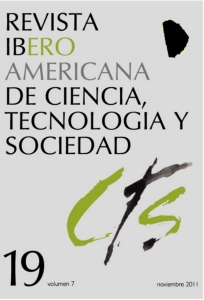The incidence of the ICTs on wages
DOI:
https://doi.org/10.52712/issn.1850-0013-728Keywords:
new information and communication technologies, technology change, inequalityAbstract
The development of Information and Communication Technologies (ICTs) has changed the labor market significantly; the employee’s level of formation and qualification on ICT has become a market entry barrier. This paper analyzes the incidence of these technologies over wages in Argentina. We observe that ICT use at work level generates a more egalitarian distribution of wages.
Downloads
References
ACEMOGLU, D. (2002): “Technical change, inequality and the labor market”, Journal of Economic Literature, 40 (1).
ACOSTA, P. y GASPARINI, L. (2002): “Incorporación de capital y brecha salarial. Una nota sobre la industria manufacturera en la Argentina de los noventa”, Anales de la XXXVII Reunión de la Asociación Argentina de Economía Política, Tucumán.
BRASSIOLO, P., BAHIRÑAK, P. y RUFFO, H. (2006): “Uso y adopción de tecnología informática en el mercado laboral de Argentina”, Anales de la XLI Reunión de la Asociación Argentina de Economía Política, Salta.
BRESNAHAN, T., BRYNJOLFSSON, E. y HITT, L. (2002): “Information technology,
workplace organization, and the demand for skilled labor: firm-level evidence”, The Quarterly Journal of Economics.
BUCHINSKY, M. (1994): “Changes in U.S. Wage Structure 1963-1987: An Application of Quantile Regression”, Econometrica, vol. 62, nº 2, pp. 405-458 (marzo).
CARD, D. y DINARDO, J. (2002): “Skill biased technological change and rising wage inequality: some problems and puzzles”, Working Paper 8769, National Bureau of Economic Research.
CECCHINI, S. (2005): “Oportunidades digitales, equidad y pobreza en América Latina: ¿Qué podemos aprender de la evidencia empírica?”, CEPAL, Serie estudios estadísticos y prospectivos.
CONTRERAS, D. y GALLEGOS, S. (2011): “Desigualdad salarial en Maérica Latina: una década de cambios”, Revista CEPAL, n°103.
CRISTINI, M. y BERMUDEZ, G. (2005): “El patrón de adopción de Internet en la Argentina, 1994-2005”, XL Reunión de la Asociación Argentina de Economía Política, La Plata.
FERRANTI, D., PERRY, G., FERREIRA, F., WALTON, M., COADY, D., CUNNINGHAM, W., GASPARINI, L., JACOBSEN, J., MATSUDA, Y., ROBINSON, J., SOKOLOF, K. y WODON, Q. (2003): “Inequality in Latin America and the Caribbean: Breaking with History?”, Banco Mundial.
FORESTIER, E., GRACE, J. y KENNY, C. (2002): “Can Information and Communication Technologies be Pro-Poor?”, Telecommunications Policy 26.
GALIANI, S. y SANGUINETTI, P. (2002): The impact of trade liberalization on wage inequality: evidence from Argentina, Mimeo, UTDT.
GOLDBERG, P. y PAVCNIK, N. (2006): “Distributional Effects of Globalization in Developing Countries”, National Bureau of Economic Research NBER Working Paper nº W12885
HEEKS, R. y KENNY, C. (2002): “ICTs and Development: Convergence or Divergence for Developing Countries?”, Proceedings of the 7th International Working Conference of IFIP WG 9.4, Information and Communication Technologies and Development: New Opportunities, Perspectives and Challenges, Indian Institute of Management Bangalore.
KALDOR, N. (1957): “A model of Economic Growth”, The Economic Journal, vol. 67, nº 268, pp. 591-624.
KRUEGER, A. (1991): “How computers have changed the wage estructure: evidence from microdata, 1984-1989”, Working paper nº 3858, National Bureau of Economic Research.
SOLOW, R. (1956): “A contribution to the Theory of Economic Growth”, The Quarterly Journal of Economics, vol. 70, nº 1, pp. 65-94.
Downloads
Published
How to Cite
Issue
Section
License
Copyright (c) 2024 CC Attribution 4.0

This work is licensed under a Creative Commons Attribution 4.0 International License.
All CTS's issues and academic articles are under a CC-BY license.
Since 2007, CTS has provided open and free access to all its contents, including the complete archive of its quarterly edition and the different products presented in its electronic platform. This decision is based on the belief that offering free access to published materials helps to build a greater and better exchange of knowledge.
In turn, for the quarterly edition, CTS allows institutional and thematic repositories, as well as personal web pages, to self-archive articles in their post-print or editorial version, immediately after the publication of the final version of each issue and under the condition that a link to the original source will be incorporated into the self-archive.











